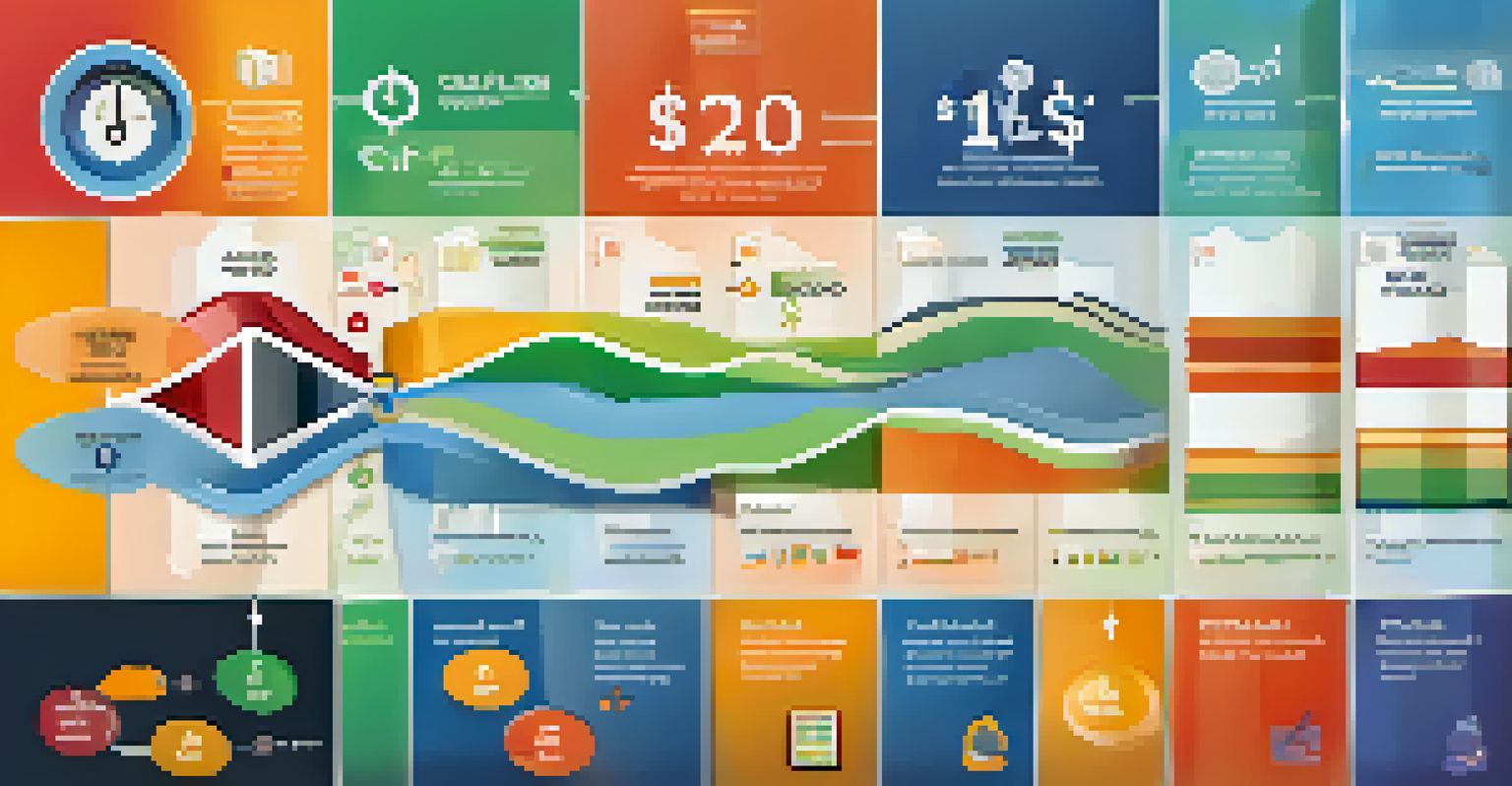Cash Flow Management: Key Metrics You Should Track

Understanding Cash Flow: The Lifeblood of Your Business
Cash flow refers to the movement of money in and out of your business. It's crucial because it determines your company's liquidity, or how easily you can cover expenses. Without positive cash flow, even profitable businesses can face financial challenges.
Cash flow is the lifeblood of any business. Without it, you will die.
Think of cash flow like the blood circulating through your body; without it, your operations can falter. Just as you wouldn’t ignore your health, you shouldn’t overlook your cash flow. Monitoring it regularly can help you make informed decisions.
In essence, understanding cash flow is the first step to mastering your finances. It impacts everything from payroll to inventory purchases, so grasping its importance is vital for long-term success.
Key Metric #1: Operating Cash Flow (OCF)
Operating Cash Flow measures the cash generated from your business operations, excluding financing and investing activities. This metric is essential because it reflects how well your business can sustain itself with its core activities.

For instance, if you sell handmade furniture, your OCF would show the cash generated from sales minus the costs of materials and labor. A positive OCF indicates that your operations are running smoothly, while a negative value might signal trouble.
Tracking OCF regularly enables you to see if your business is generating enough cash to maintain its operations. It's a clear indicator of financial health, so keeping an eye on it can prevent future cash flow crises.
Key Metric #2: Free Cash Flow (FCF)
Free Cash Flow is the cash remaining after a company has met its capital expenditures. It’s a crucial metric because it shows how much cash you have available for expansion, paying dividends, or reducing debt.
The goal is to turn data into information, and information into insight.
Imagine FCF as your disposable income; after paying your bills, it represents the money you can use for fun or saving. Similarly, a positive FCF gives you the flexibility to invest in new opportunities or weather financial storms.
Monitoring FCF allows you to understand the true profitability of your business. It highlights your ability to generate cash after necessary investments, making it a key metric for long-term planning.
Key Metric #3: Cash Flow Forecasting
Cash Flow Forecasting involves predicting future cash inflows and outflows based on historical data and trends. It’s like looking into a crystal ball to anticipate your business’s financial future and plan accordingly.
By creating a cash flow forecast, you can identify potential shortfalls and take proactive measures, such as adjusting expenses or securing financing. This foresight can prevent cash crunches and ensure smooth operations.
Regularly revisiting and updating your forecast helps capture seasonal patterns and changes in business dynamics. It’s an effective strategy for maintaining financial stability and making informed decisions.
Key Metric #4: Cash Conversion Cycle (CCC)
The Cash Conversion Cycle measures how quickly you convert your investments in inventory and other resources into cash flow from sales. A shorter CCC indicates that your business efficiently turns resources into revenue.
Think of the CCC like a relay race; the quicker you pass the baton (or cash) from one stage to the next, the faster you'll reach the finish line. A shorter cycle means you can reinvest cash into the business sooner.
Tracking your CCC helps identify areas for improvement, whether it's speeding up inventory turnover or reducing accounts receivable. By optimizing this cycle, you can enhance overall cash flow management.
Key Metric #5: Current Ratio
The Current Ratio is a liquidity ratio that measures a company's ability to pay short-term obligations with its short-term assets. A ratio above 1 indicates that you have more assets than liabilities, which is a good sign of financial health.
Consider it like a safety net; it shows whether you have enough resources to cover unexpected expenses. For example, if your Current Ratio is 2, it means you have double the assets needed to pay off your current liabilities.
Regularly assessing your Current Ratio can help you understand your liquidity position and make informed financial decisions. It's a simple yet effective tool for gauging your business's short-term financial health.
Key Metric #6: Quick Ratio
Also known as the Acid-Test Ratio, the Quick Ratio assesses a company's ability to meet its short-term obligations with its most liquid assets. This metric excludes inventory, providing a more conservative view of liquidity.
Imagine you’re in a pinch; you want to know if you can cover your bills without relying on selling your inventory. The Quick Ratio gives you that clarity, focusing on cash and receivables.

By tracking the Quick Ratio, you can ensure that your business can meet its obligations even during slow sales periods. It’s an important metric for understanding your immediate financial health.
Conclusion: The Importance of Cash Flow Management
Effective cash flow management is crucial for the success of any business. By tracking these key metrics, you can gain insights into your financial health and make informed decisions to drive growth.
Think of cash flow management as the steering wheel of your business; it guides you toward your financial goals and helps you navigate challenges. The right metrics can empower you to take control of your finances.
In the end, understanding and managing your cash flow is not just about numbers; it's about ensuring the longevity and success of your business. Stay proactive, keep these metrics in mind, and you'll be well on your way to financial stability.